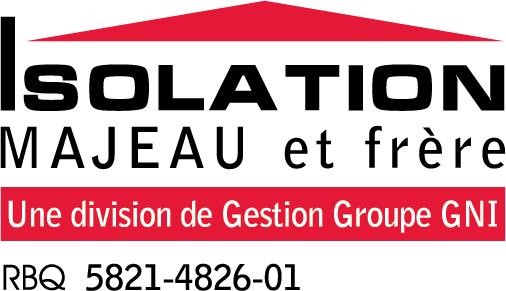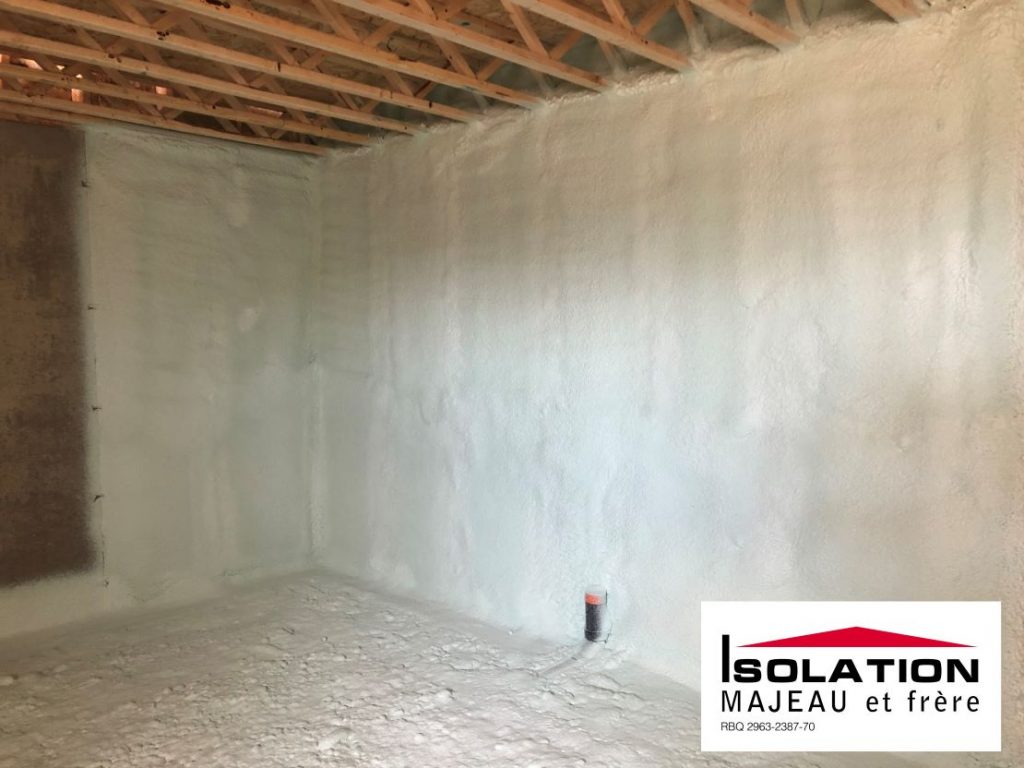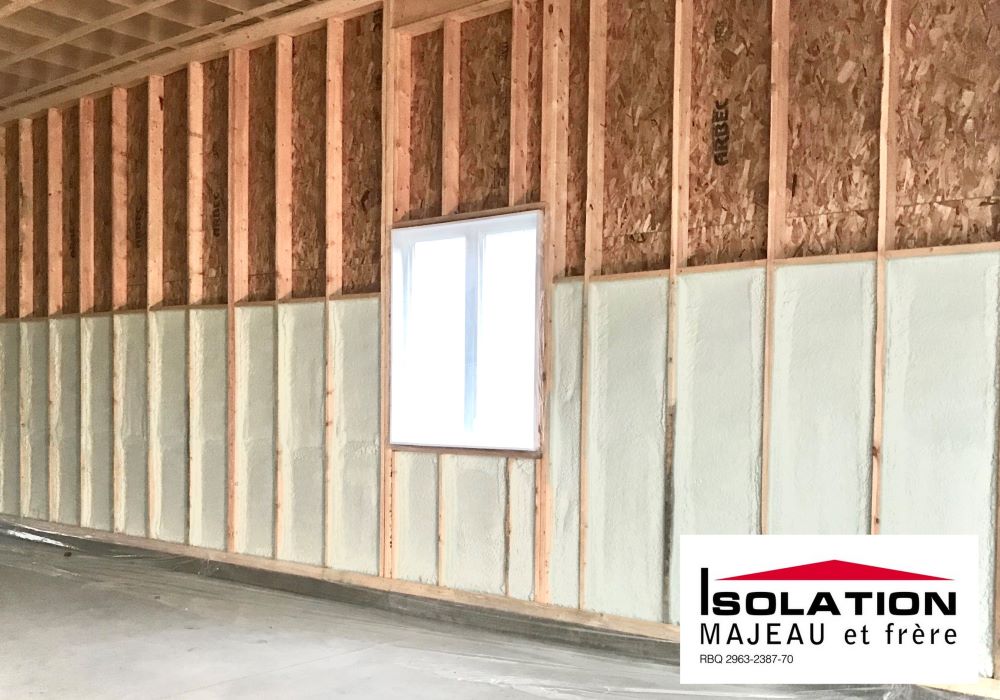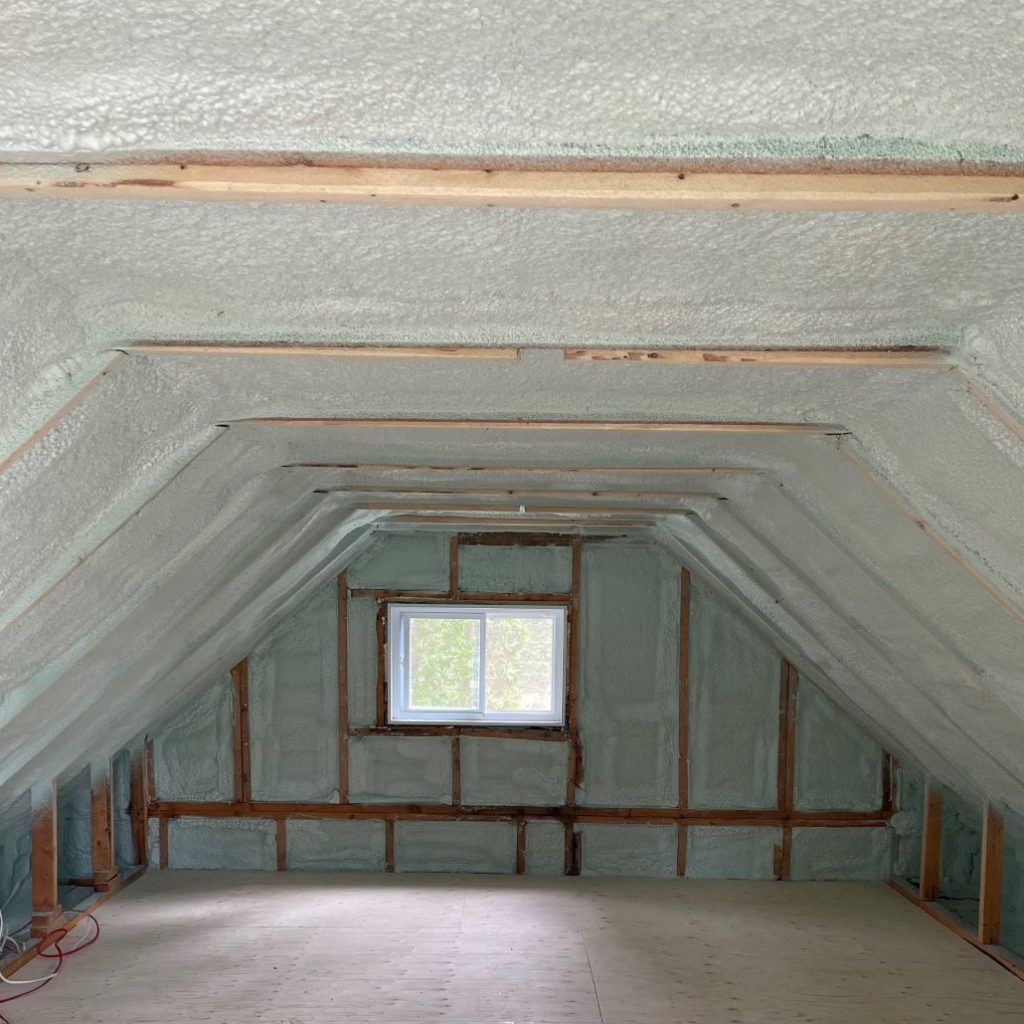The vapour barrier is one of the building’s envelope misunderstood elements. What’s its use? Which materials can be used as vapour barrier? How can water droplets get through a wall? Can a simple plastic wrap be efficient? Isolation Majeau sheds light on this house construction and renovation essential element.
The Two Ways Vapour Can Go Through a Wall
Your house’s air contains microscopic water droplets that move around. This water vapour can get through a wall by the phenomenon of diffusion. This means that the tiny water droplets will go towards the dryer areas by crossing the material fibres. So, tiny water droplets will eventually get through an old gypsum panel without a vapour barrier.
Water Vapour can also get through a wall by air displacement. This phenomenon is possible when there is a hole in one of the materials. If the air pressure is higher on one side than the other, the air will go through the hole and carry water droplets.
What Is a Vapour Barrier?
By definition, a vapour barrier is a material that will allow a very small quantity of water vapour through by diffusion. All materials have vapour barrier properties because they slow down diffusion. However, according to the building Code, a material is considered as vapour barrier if its permeance index is 60 ng/Pa.s.m2 or 1 perm and less. Permeance is measured in nanograms of water that the material can let through.
Some Materials’ Permeance
| Material | Permeance Index |
| A gypsum panel with primer and 2 inches of paint | 160 perms |
| 25 mm of type 2 expanded polystyrene foam (white polystyrene found in houses from the years 1960 – 1970) | 86 to 160 perms |
| 25 mm of sprayed polyurethane foam (becomes vapour barrier starting at 1 inch and 3/4)25 mm extruded polystyrene foam | 96 perms |
| 25 mm extruded polystyrene foam | 50 perms |
| Chipboard (OSB) 11 mm | 44 perms |
| Polyethylene (plastic membrane) | 1.6 to 5.8 perms |
| Polyethylene covered with a metallic membrane | Nearly 0 perm |
Is It Compulsory to Install a Vapour Barrier?
Quebec’s building Code makes it compulsory to install a CCMC (Canadian Building Materials Centre) vapour barrier on the warm side. The walls, the ceilings and the floors must contain a vapour barrier in order to keep water vapour that’s in the air from migrating in the building’s envelope. The vapour barrier joints don’t have to be sealed if there is an air barrier system somewhere else in the house.

Can We Install a Vapour Barrier Outside?
Yes, it’s possible to install a vapour barrier outside if the material that is used is insulating enough to keep condensation from forming and to keep warmth in the wall. In Montreal, the exterior insulation value must have a 20% ration of interior insulating value.
Problems That Appear in the House If the Vapour Barrier Is Not tight
If humidity accumulates in the walls or in your attic, there is a risk that it will cause condensation when in contact with cold materials. This water accumulation will eventually cause mildew, decay and degradation of the materials. Also, the quality of the air in your house risks of deteriorating. Health problems could even arise.
The Vapour Barrier Material of the Future
A new material is shaking up the world of vapour barrier. We’re talking about hygrovariable membranes. As its name says, these membranes change their properties according to the humidity level they are subject to. For example, during summer in Quebec, the warm side is on the interior because the conditioned air which has a low humidity level is inside. Condensation can be then found inside. This smart membrane then lets humidity through, allowing it to evacuate.
In short, the vapour barrier plays an essential role in avoiding condensation and the humidity problems in the walls and the attic. Remember that a vapour barrier certified polyethylene is one of the best materials to block water vapour. If you also want to insulate your walls while you’re renovating, don’t hesitate to contact one of our experts in insulation.
This article was originally published on May 17, 2022 by Pierre Boucher








